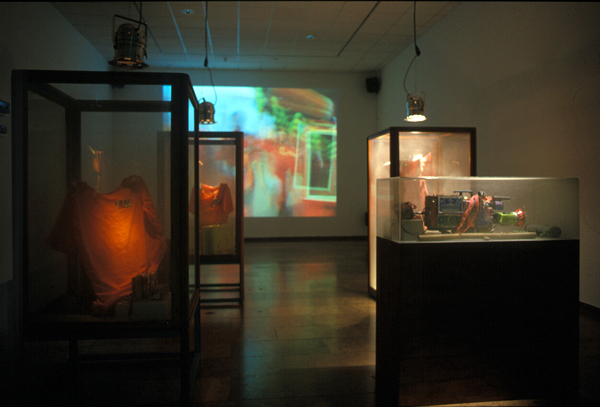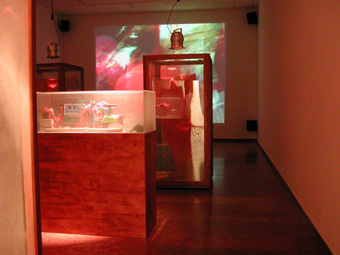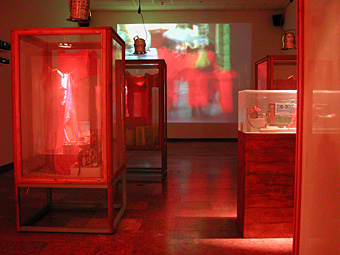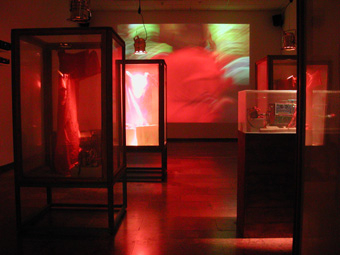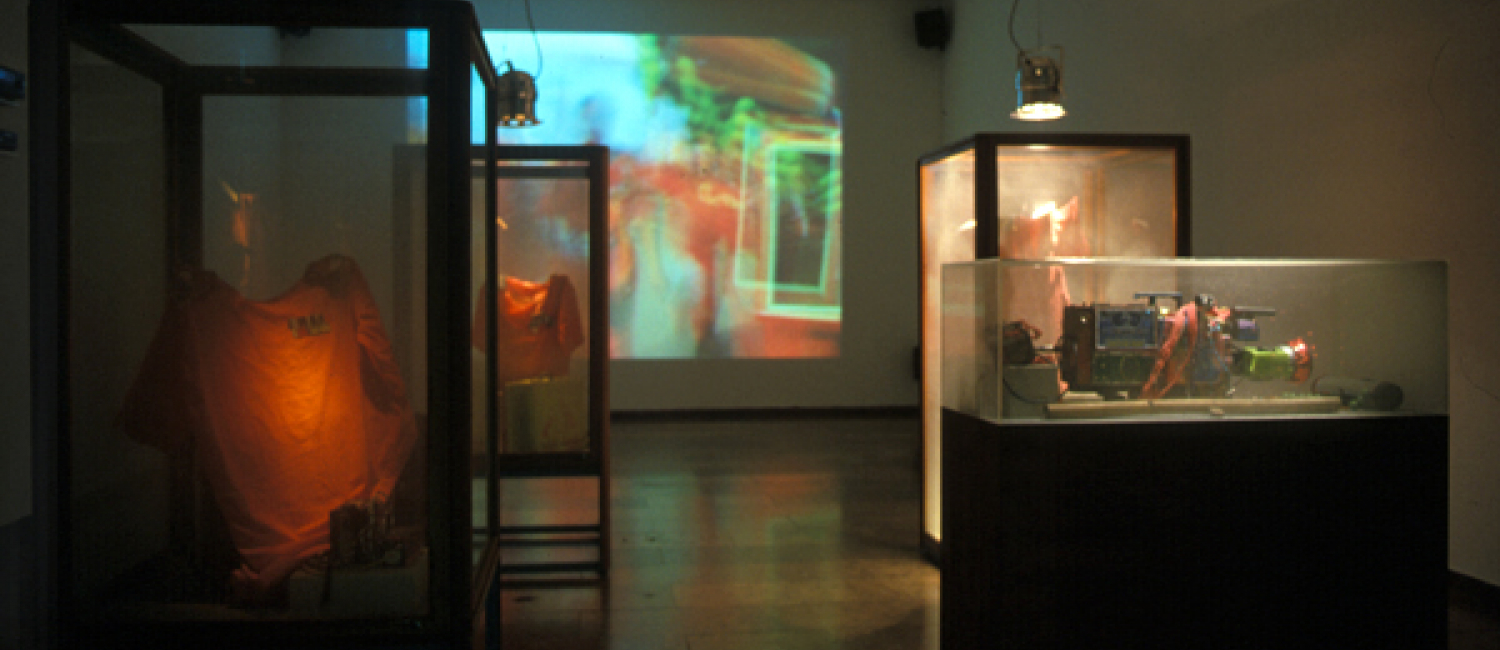Sebestyén Kodolányi and Csaba Uglár’s project violates the toposes of confraternity and the noble-spirited sentiments of men’s brotherhood. The „documentary film”, an experiment, documents a fraud. The “spiritual community” dwells on a scholarly topic, first in a room of utterly mysterious atmosphere, then sets out and marches along against a backdrop of the streets, the blocks and the inhabitants of the city. The group of men in garments imitating sacred habits, visualize both the brotherhood of men in the gospels of the classical early Christian world and the life of orthodox monasteries today, as known to the western world mostly from documentary films. The camera, follows the gloomy figures on a sunny summer afternoon goes on a pilgrimage through the embankments, the empty streets and neglected tenement blocks of Budapest, and finally drops into the vortex of the carnival.
Sebestyén Kodolányi and Csaba Uglár’s project violates the toposes of confraternity and the noble-spirited sentiments of men’s brotherhood. The "documentary film”, an experiment, documents a fraud. The "spiritual community” dwells on a scholarly topic, first in a room of utterly mysterious atmosphere, then sets out and marches along against a backdrop of the streets, the blocks and the inhabitants of the city. The group of men, in garments which imitate sacred habits visualize both the brotherhood of men in the gospels of the classical early Christian world and the life of orthodox monasteries today, as known to the western world mostly from documentary films. The camera, follows the gloomy figures on a sunny summer afternoon goes on a pilgrimage through the embankments, the empty streets and neglected tenement blocks of Budapest, and finally drops into the vortex of the carnival.
There is another component of the documentary character, the imitated Orientalism of quasi folk objects (like the camera with its tawdry sequin decoration and felt-tip pen calligraphy organized to create a uniform surface in the sense of horror vacui) which, again, is a paraphrase of the Oriental sacred aesthetics. The deliberate exoticism of the Oriental world is a fraud as well as the allusion to the sacred myths of brotherhood which suggest universality and timelessness, especially because the ideology behind the “noble-spirited sentiments of men’s brotherhood” operates another possible type of bonds among men, and this is the heroism and solidarity of terrorists. The ethos of sacred confraternity thus turns into the narrative of monk-colonel/major characters in which the world of Oriental objects is replaced by a series of hints at the mass-murdering militant functions of technology.
Kodolányi and Uglár’s Violation manoeuvres off the well-known toposes of masculine subjectivity embedded in Oriental and technological pseudo-folklore. Their story is documented partly with solemn and charismatic declarations, partly with somewhat theatrical scenes. Thus they direct a parody of the old banalities of masculine myths, a parody of themselves in fact which will complete their fraud when their artistic subjectivity scintillates through violation and illusion and still talks to us.
Emese Süvecz
Curators of the exhibition: Dóra Hegyi and Emese Süvecz
